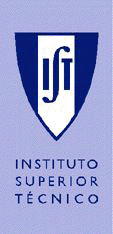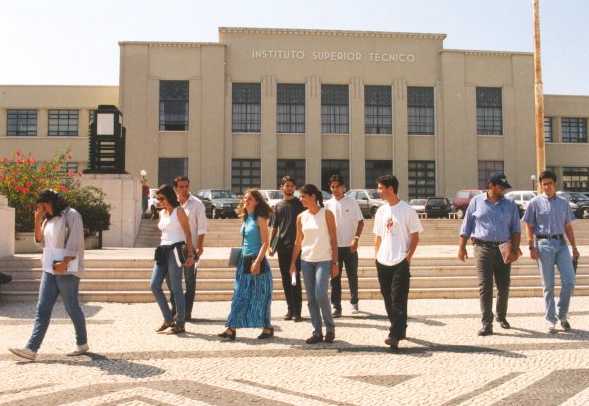 |
The mission of IST is to contribute to the development of society by providing high quality Education in the areas of Engineering, Science and Technology, at undergraduate and postgraduate levels as well as lifelong learning, and by carrying out Research, Development and Innovation activities in accordance with the highest international standards. Instituto Superior Técnico was established with the objective of providing the country with Engineers with know-how and the necessary skills to succeed in their professional lives, while simultaneously contributing to the economic development of the country. Today, IST offers 21 undergraduate programmes, attended by over 8900 students, covering a wide range of areas of knowledge, which, include not only the traditional engineering specialisations but also other more modern areas such as Biological Engineering, Biomedical Engineering, Aerospace Engineering and Physics Engineering. Postgraduate training is also important, with more than 1500 students distributed among 26 doctoral areas and various third degree programmes. This is made possible by a highly-qualified teaching staff, over 760 doctorates, and a highly efficient organisation of services. |
Today, IST is recognized for its high quality education and R&D, in a growing synergy with the economic sector. IST is considered, in Portugal, and abroad, as a High Quality Engineering, Science and Technology School, which is able to rival with the best Schools worldwide, in their areas of competence.
HistoryThe origins of IST go back to the Industrial and Commercial Institute of Lisbon that was established in the second half of the nineteenth century to train industrial engineers. In 1884, Alfredo Bensaúde applied for the position of Chair of Mineralogy and Geology at this institution. In 1892 Bensaúde proposed wide-ranging reforms, highlighting the deficiencies in Portuguese higher technical education. His suggestions, which were highly critical, were in the end rejected by the commission for educational reorganisation of which he was a member. The structural model that he proposed, the result of his experience in Germany where he obtained his doctorate, would however serve as the basis for the new Instituto Superior Técnico, created following the founding of the Republic.

Manuel de Brito Camacho, Minister for Development, recognised the enterprising spirit of Bensaúde and in 1910 invited him to become Director of the future IST that would be created from the division of the former Industrial and Commercial Institute of Lisbon into the Instituto Superior Técnico (Higher Technical Institute) and the Instituto Superior de Comércio (Higher Commercial Institute). Initially, there were five engineering programmes taught at IST - Mining, Civil, Mechanical, Electrical, and Chemical-Industrial - with students following a general programme at first and then specialising in particular areas for a further three years.
In 1930, the Technical University of Lisbon came into being, and IST, which had been in regular operation for twenty years, became one of the four schools of which it is made up. Throughout this and the following decade, the image of engineers trained at IST was projected in major engineering works, set in motion by Duarte Pacheco, who was then Minister of Public Works. Between 1952 and 1972, the Commission for Nuclear Energy Studies (Comissão de Estudos de Energia Nuclear), established under the auspices of the Institute of High Culture (Instituto de Alta Cultura), played an important role in training human resources, leading to the setting up of 12 study centres and incorporating a total of 14 laboratories.
Three of these centres were based at IST, covering the fields of Chemistry, Geology and Mineralogy, and Electronics. The Institute of High Culture also promoted a training policy for scientific staff, including doctoral studies abroad, with funding under the Development Plan. This had a major impact on the development of IST´s teaching staff.
Throughout this period, IST showed remarkable growth, with student numbers rising to 4,500 in 1970/71 (16 times as many as the 287 students who were enrolled in the 1930/31 academic year). In terms of quantitative and qualitative growth, IST has decisively contributed to the modernisation and development of the country, by promoting the link between the university sector and the entrepreneurial/industrial sector. The consolidation of this principle can also be seen in the development of IST in the Oeiras Science and Technology Park (Taguspark), with the construction of new buildings to expand the School, in which the academic activities began in 2000/2001.
From the 1980s onwards, IST has also contributed to influence and implement a set of institutions that seek to serve as the interface between the university sector and industry, and that develop, among other things, industrially oriented vocational training and research activities. IST has consolidated its position as a High Quality Engineering School in the areas of Engineering, Science and Technology in its three areas of activity: Education, Research and Link to Society.